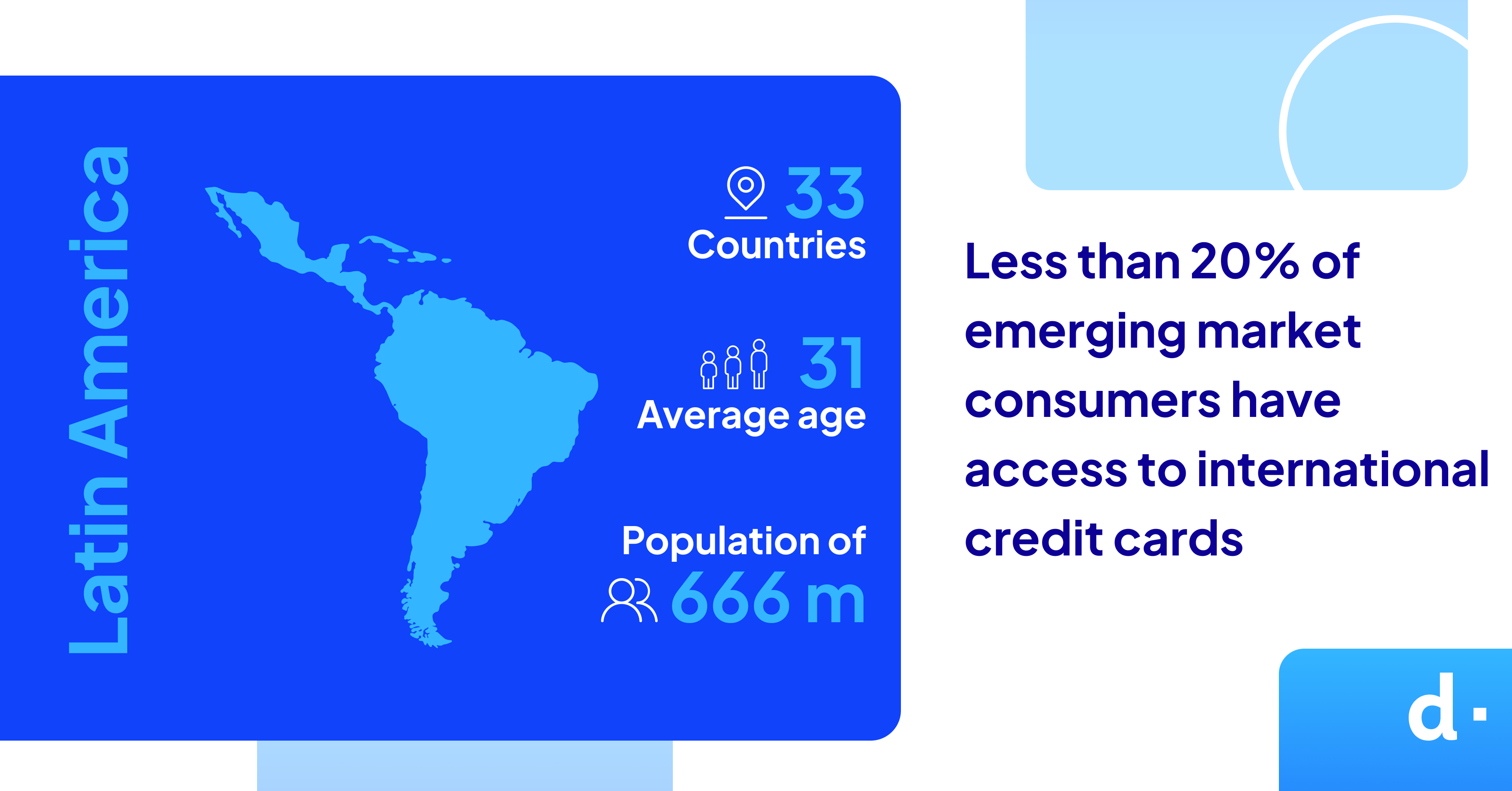Why Emerging Markets Are The Next Frontier For Global Business Expansion
Emerging markets present a compelling opportunity for businesses, driven by significant population growth, economic expansion, and the rapid adoption of digital technologies.
Here’s why these regions are becoming increasingly attractive:
Population growth
The global population recently surpassed 8 billion, marking a one-third increase over the last 25 years. This growth is set to continue, with the population expected to reach nearly 10 billion by 2050. Notably, this growth is heavily concentrated in developing economies, particularly in Asia, Oceania, and Africa. These regions have seen the most significant increases, with Asia and Oceania experiencing a 1.2 billion increase and Africa adding another 700 million people. This trend is expected to persist, with half of the projected global population increase by 2050 occurring in large countries within these regions.
The proportion of the world's population living in developing countries has risen from 66% in 1950 to 83% in more recent years, and it’s projected to reach 86% by 2050. Despite the challenges that come with such rapid growth, there are immense economic opportunities, particularly as the working-age population increases.
Youthful, digital-savvy populations in emerging markets:
Emerging markets are characterized by their young, digitally adept populations. This demographic profile presents significant opportunities for innovation and growth, especially in sectors such as technology, eCommerce, and digital services. In many cases, the needs of these youthful populations in emerging markets are not fully met, opening avenues for new businesses to address these gaps with innovative solutions.
A key example is India, a major emerging market with an exceptionally large young population. India has around 900 million people under the age of 35. This demographic is almost three times the entire population of the United States. This young population is not only large but also increasingly tech-savvy, providing a ready market for digital services and eCommerce.
Africa also boasts a significant young population, with 60% of its population under the age of 25. This youthful demographic is entering the workforce at an unprecedented rate. By 2030, Africa’s working-age population is expected to increase by 450 million, representing a tremendous opportunity for businesses. This young, dynamic population is increasingly digital-savvy, with high mobile penetration rates and growing internet access, making Africa a prime market for digital and technological innovations. The untapped potential in sectors like fintech, eCommerce, and digital services is vast, providing opportunities for businesses to cater to the evolving needs of these young consumers.
Economic growth
Emerging and developing economies (EMDEs) are set to contribute 66.7% of global growth in 2024. Growth in these regions is expected to be robust, with projections of 4.1% in 2024 and 4.2% in 2025. In contrast, growth in advanced economies is projected to decline slightly from 1.6% in 2023 to 1.5% in 2024 before rising to 1.8% in 2025.
Regional Breakdown:
- Emerging Asia: Growth in this region is expected to increase by 5.2% in 2024 and 4.8% in 2025. This includes strong growth in India, which is projected to maintain a robust growth rate of 6.5% in both 2024 and 2025.
- Latin America and the Caribbean: Growth in this region is projected to increase by 1.9% in 2024 before rising to 2.5% in 2025. Major economies like Brazil and Mexico will drive this growth, largely due to stronger-than-expected domestic demand and higher-than-expected growth in large trading-partner economies.
- Middle East and North Africa: Growth in this region is expected to increase by 2.95% in 2024 and 4.2% in 2025.
- Sub-Saharan Africa: Growth is projected to rise by 3.8% in 2024 and 4.1% in 2025.
Number of people coming online
The rapid digitalization in emerging markets is a key factor driving economic opportunities. Increasing internet penetration and mobile connectivity are enabling more people to come online, creating a burgeoning market for digital services and eCommerce.
eCommerce Size Estimations for 2028 - Digital Payments:
- LATAM eCommerce Market (2028 Estimation): The estimated market size is $1.4 trillion USD, with a Compound Annual Growth Rate (CAGR) of 16% from 2022 to 2028. This substantial growth indicates a rapidly expanding digital marketplace in LATAM. With increased internet penetration and a growing digital-savvy population, LATAM presents significant opportunities for eCommerce players, particularly in sectors like retail, consumer goods, and digital services.
- Africa eCommerce Market (2028 Estimation): The estimated market size is $0.6 trillion USD, with a CAGR of 17% from 2022 to 2028. Africa’s eCommerce market is poised for robust growth, driven by increasing internet and mobile connectivity, a young and growing population, and evolving consumer behavior favoring online shopping. The growth rate suggests a rapidly emerging market with considerable potential for new entrants and existing eCommerce businesses.
- APAC eCommerce Market (2028 Estimation): The estimated market size is $1.6 trillion USD, with a CAGR of 20% from 2022 to 2028. The APAC region is expected to witness the highest growth rate in eCommerce, driven by technological advancements, a burgeoning middle class, and rising digital literacy. The region’s diverse and large consumer base makes it an extremely lucrative market for eCommerce businesses.

The importance of local payment methods
Local payment methods account for 83% of total eCommerce expenditure in the major markets we operate. On a global scale, local payment methods represent an estimated 61% of worldwide eCommerce spend, amounting to approximately $3.4 trillion. For international merchants looking to expand beyond the US and Western Europe, developing a comprehensive local payment strategy is imperative.

Enabling seamless cross-border payments
Having a local partner who understands the unique payment landscapes in emerging markets is crucial. A local partner can navigate regulatory requirements, offer local payment solutions, and provide insights into consumer behavior, ensuring that businesses can successfully tap into these high-growth regions.
For detailed insights into emerging markets and the evolving landscape of local payments, download the Payments Handbook and see how you can leverage these opportunities. Download your copy here and let us know what you think.
About dLocal
dLocal powers local payments in high-growth markets, connecting global enterprise merchants with billions of high-growth market consumers across Africa, Asia, and Latin America. Through the "One dLocal" concept (one direct API, one platform, and one contract), global companies can accept payments, send payouts, and settle funds globally without the need to manage separate pay-in and payout processors, set up numerous local entities, integrate multiple acquirers and payment methods in each market.
For more information, visit dLocal.

